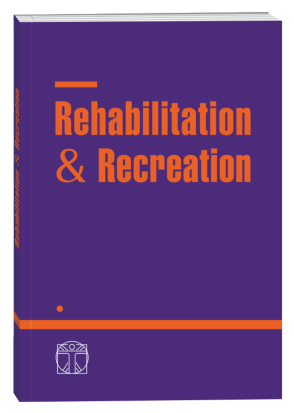BALANCE AND COORDINATION ARE THE KEYS TO AN EFFECTIVE PATIENT EXAMINATION IN PHYSICAL THERAPY
DOI:
https://doi.org/10.32782/2522-1795.2024.18.3.7Keywords:
physical activity, cardiovascular risk, cardiorehabilitation, prevention, evidence-based medicineAbstract
The article examines the value of using functional tests in physical therapy to assess the state of the musculoskeletal system. Through the analysis of the results of such tests on patients of various ages, the article emphasizes the importance of these methods in diagnosis and development of individual rehabilitation plans. The purpose of the study is to study the role of balance and coordination in the process of effective examination of patients in physical therapy. Particular attention is paid to the analysis of assessment methods and the development of treatment approaches that contribute to the improvement of these skills in patients with various medical conditions. Material. The study used participants’ medical histories, functional test results, and examinations to analyze balance and coordination. In particular, tools such as the Romberg test, the knee stability test, the shoulder joint mobility assessment and other specialized tests were used to determine the coordination and stability of the patients. The findings. The results showed that the development and improvement of balance and coordination skills can significantly increase the effectiveness of the rehabilitation process, contributing to a rapid recovery and improving the quality of life of patients. It was found that systematic training and the use of computerized systems allow to accurately assess the condition of patients and adapt individual treatment programs. Conclusions. The study confirms the importance of balance and coordination in physical therapy as critical factors in the effective treatment and recovery of patients. The results indicate the need for further research to optimize recovery methods and develop new individualized approaches to treatment and rehabilitation after different types of injuries. It is important to focus on the integration of modern technologies and innovative techniques in the practice of physical therapy to ensure better results.
References
ATS Statement. Using the guidelines for the six-minute walk test. American Journal of Respiratory and Critical Care Medicine, 2002.
Bach B.R., Jr., Warren R.F., Wickiewicz T.L. The Axis Shift Phenomenon: Findings and a Comprehensive Analysis of Twelve Individuals. Am J Sports Med. September–October 1988. No. 16(5). P. 571–576. doi: 10.1177/036354658801600603.
Berg K., Wood-Dauphinee S., Williams J.I., Maki B. Measuring balance in older adults: instrument validation. Canadian Journal of Public Health, 1992.
Hafström A., Malmström E.M., Terdèn J., Fransson P.A., Magnusson M. The Romberg eyes-open and eyes-closed test: the role of proprioceptive and vestibular dysfunction. Journal of Vestibular Research, 2000.
Horstmann T. and others. Effects of balance training on balance performance in healthy older adults: a systematic review and meta-analysis. Sports Medicine, 2017.
Lin J.C. et al. Functional assessment and exercises for disorders of the shoulder joint. Sports Health, 2010.
Plisky P.J. et al. Reliability of an instrumented device for measuring components of the Y-Balance test. Journal of Sports Rehabilitation, 2006.
Podsiadlo D., Richardson S. Timed “Up & Go”: a test of basic functional mobility for ill older persons. Journal of the American Geriatrics Society, 1991.
Sherrington C., Fairhall N.J., Wallbank G.K. etc. Exercise to prevent falls in community-dwelling older adults. Cochrane Database of Systematic Reviews, Issue 1. Art. No. CD012424, 2019.
Shumway-Cook A., Woollacott M.H. Motor control: translation of research into clinical practice. Lippincott Williams & Wilkins, 2007.
Downloads
Published
How to Cite
Issue
Section
License
Copyright (c) 2024 М. В Дідаш, О. І. Тиравська, Н. О. Івасик

This work is licensed under a Creative Commons Attribution-NonCommercial-NoDerivatives 4.0 International License.











